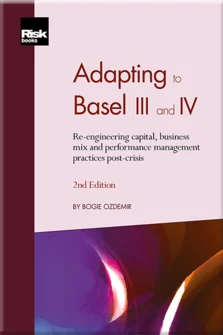Current Practices and their Shortcomings in Risk, Capital, Business-mix and Performance Management
Introduction
Environmental Forces: Economic Instability, Low Interest Rates, Change in Demographics, Continuing Regulatory Changes and Digital Evolution
Current Practices and their Shortcomings in Risk, Capital, Business-mix and Performance Management
Evolution of Economic Capital Measurement and Management
Integrated Capital Management: ICAAP and ORSA
Procyclicality Management: Developing a Coherent Risk Rating Framework for Risk Management, Capital Management, Stress Testing and IFRS 9 Purposes
Capital Optimisation and Business-mix Management
Performance, Profitability Management and Hurdle Rate
Optimal Management of the Interest Rate Risk in the Banking Book
Prudent LGD Estimation for Mortgages
Developing and Implementing Effective Fintech Strategies
Implementing IFRS 9 by Adapting AIRB Models
Organisational (Re)alignment
In the previous chapter, we discussed the environmental forces putting tremendous pressure on the ROE of financial institutions, necessitating more effective capital, interest rate and business-mix management. In this chapter, we will examine some existing practices that inhibit effective capital and business-mix management. We will cover a number of common shortcomings – inadequate capital planning and budgeting, and lack of business-mix management – as well as some unintended consequences of Basel III, suboptimal pricing and measurement problems with risk-adjusted return on capital (RAROC), inadequate management of capital volatility and procyclicality of capital, and the lack of integration among different functions within an organisation. We will also explore the evolving role of the corporate risk function within FIs and the need for change. Finally, we will conclude by identifying a number of key success factors in the new regulatory landscape.
SUBOPTIMAL MANAGEMENT OF INTEREST RATE RISK IN THE BANKING BOOK
Risk limits are ad hoc and not tied into the risk appetite
Interest rate risk is defined as the risk of a reduction in the net interest income (NII) and/or a
Copyright Infopro Digital Limited. All rights reserved.
As outlined in our terms and conditions, https://www.infopro-digital.com/terms-and-conditions/subscriptions/ (point 2.4), printing is limited to a single copy.
If you would like to purchase additional rights please email info@risk.net
Copyright Infopro Digital Limited. All rights reserved.
You may share this content using our article tools. As outlined in our terms and conditions, https://www.infopro-digital.com/terms-and-conditions/subscriptions/ (clause 2.4), an Authorised User may only make one copy of the materials for their own personal use. You must also comply with the restrictions in clause 2.5.
If you would like to purchase additional rights please email info@risk.net










